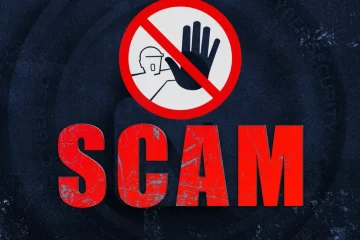Dry and damaged hair can be a frustrating issue, impacting both appearance and health. Whether caused by excessive heat styling, chemical treatments, or environmental factors, addressing dryness and damage requires a multifaceted approach. While using the right hair products is crucial for managing these problems, adopting a comprehensive treatment plan can help restore your hair’s vitality and strength. Here are the best treatments for damaged and dry hair.
1. Deep Conditioning Treatments
One of the most effective ways to combat dry and damaged hair is through deep conditioning treatments. These treatments provide intense moisture and nourishment, helping to repair the hair shaft and improve overall texture.
Look for deep-conditioning hair products that contain hydrating ingredients like shea butter, argan oil, or coconut oil. These ingredients penetrate the hair cuticle to replenish moisture and strengthen your hair from within. Using a deep conditioner once a week can significantly improve your hair’s elasticity and shine. Apply the product after washing your hair, leave it on for the recommended time, and rinse thoroughly.
2. Leave-In Conditioners
Leave-in conditioners are another excellent hair product for managing dryness and damage. Unlike regular conditioners, leave-in products remain in your hair, providing ongoing hydration and protection throughout the day.
Choose leave-in conditioners formulated with moisturizing ingredients such as glycerin, aloe vera, or panthenol. These components help to lock in moisture and protect your hair from environmental stressors. Apply the leave-in conditioner to damp hair and distribute evenly from roots to ends. It’s especially beneficial for detangling and reducing frizz, making your hair more manageable.
3. Hair Masks
Hair masks are intensive treatments designed to address various hair concerns, including dryness and damage. They often contain concentrated ingredients that help repair and strengthen your hair.
To choose an effective hair mask, look for products with proteins like keratin or silk amino acids, which help rebuild and reinforce damaged hair. Masks with natural oils, such as jojoba or olive oil, can also provide deep conditioning and restore moisture. Apply the mask once a week, focusing on the mid-lengths and ends of your hair, and leave it on for the time specified on the packaging before rinsing.
4. Moisturizing Shampoos
A gentle, moisturizing shampoo can make a significant difference for dry and damaged hair. Harsh shampoos that contain sulfates can strip your hair of its natural oils, exacerbating dryness and damage.
Opt for sulfate-free shampoos that cleanse without removing essential moisture. Look for shampoos with ingredients like honey, aloe vera, or coconut oil, which provide hydration while cleansing your hair. Pairing a moisturizing shampoo with a complementary conditioner can help maintain moisture levels and improve overall hair health.
5. Heat Protectants
Excessive use of heat styling tools can contribute to dry and damaged hair. Heat protectants are essential products that help shield your hair from the damaging effects of heat. When using heat styling tools such as flat irons, curling wands, or blow dryers, apply a heat protectant spray or serum to your hair beforehand. These hair products create a barrier between your hair and the heat, reducing the risk of damage and keeping your hair looking healthy. Choose heat protectants with ingredients like silicones or vitamins that help to smooth and protect your hair.
6. Avoiding Over-Washing
Over-washing your hair can strip it of its natural oils, leading to increased dryness and damage. Instead of washing your hair daily, try to extend the time between washes to preserve natural moisture. When you do wash your hair, use a gentle, moisturizing shampoo and avoid hot water, which can further dehydrate your hair. Opt for lukewarm water to cleanse your hair and scalp, and follow up with a conditioner to restore moisture.
7. Regular Trims
Regular trims are a simple yet effective way to manage dry and damaged hair. Trimming helps remove split ends and breakage, preventing damage from traveling up the hair shaft and causing further issues. Aim to get a trim every six to eight weeks to maintain the health and appearance of your hair. Even a small trim can make a noticeable difference in the overall condition of your hair, reducing the appearance of damage and promoting healthier growth.
8. Minimizing Chemical Treatments
Chemical treatments, such as coloring, perming, and relaxing, can contribute to dryness and damage. If possible, minimize the use of these treatments or opt for less harsh alternatives. If you do use chemical treatments, ensure that you use hair products designed specifically for treated hair. These products are formulated to address the unique needs of chemically processed hair, helping to maintain moisture, strength, and shine.
Conclusion
Managing dry and damaged hair requires a combination of the right hair products and thoughtful care practices. By incorporating deep conditioning treatments, leave-in conditioners, hair masks, and moisturizing shampoos into your routine, you can restore moisture and strength to your hair. Additionally, using heat protectants, avoiding over-washing, and getting regular trims can help maintain your hair’s health and prevent further damage. Reducing the frequency of chemical treatments and choosing products designed for your hair type will also contribute to healthier, more vibrant hair. With the right approach and products, you can effectively address dryness and damage, leaving your hair looking and feeling its best.
Explore the latest news and updates on Alevemente




